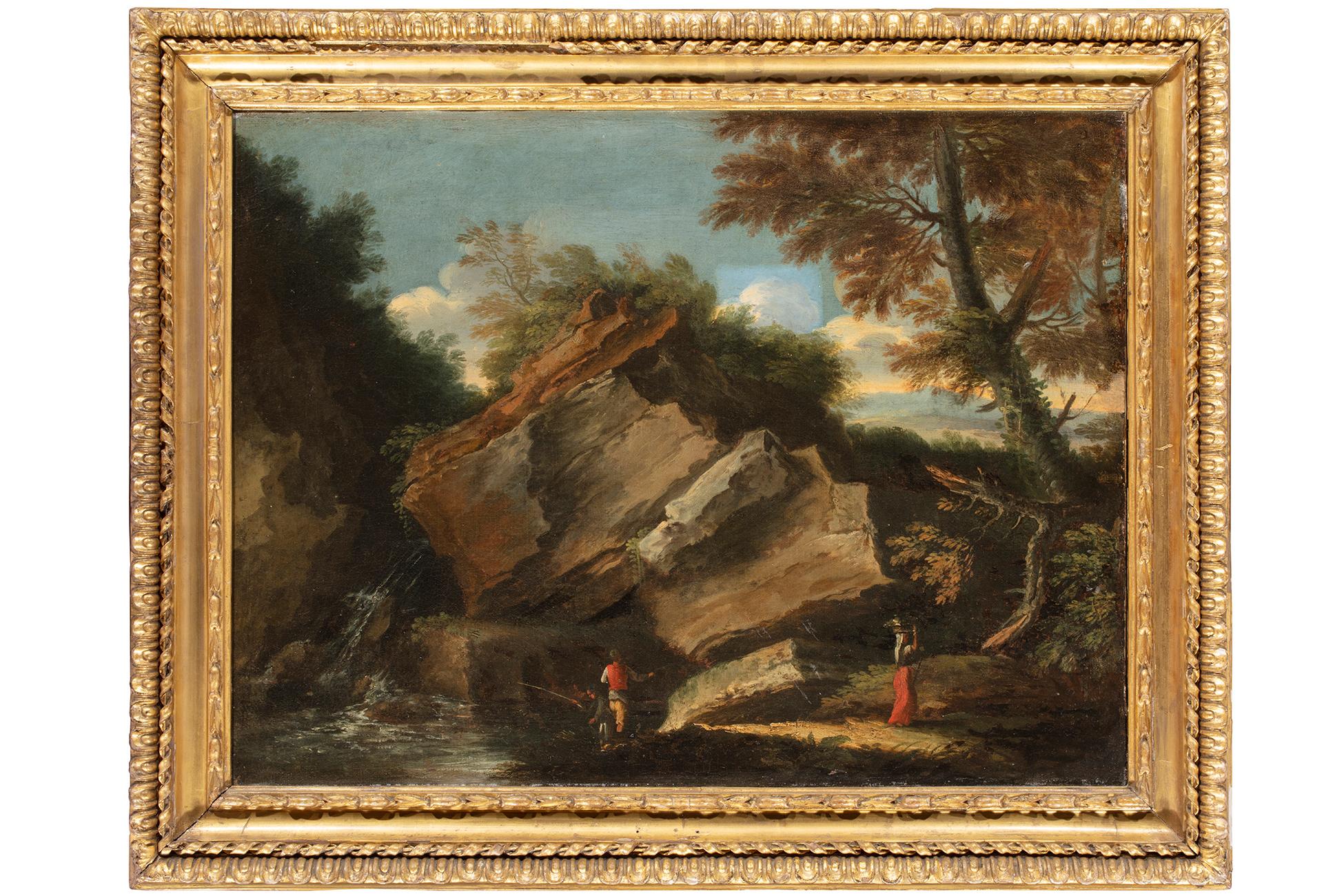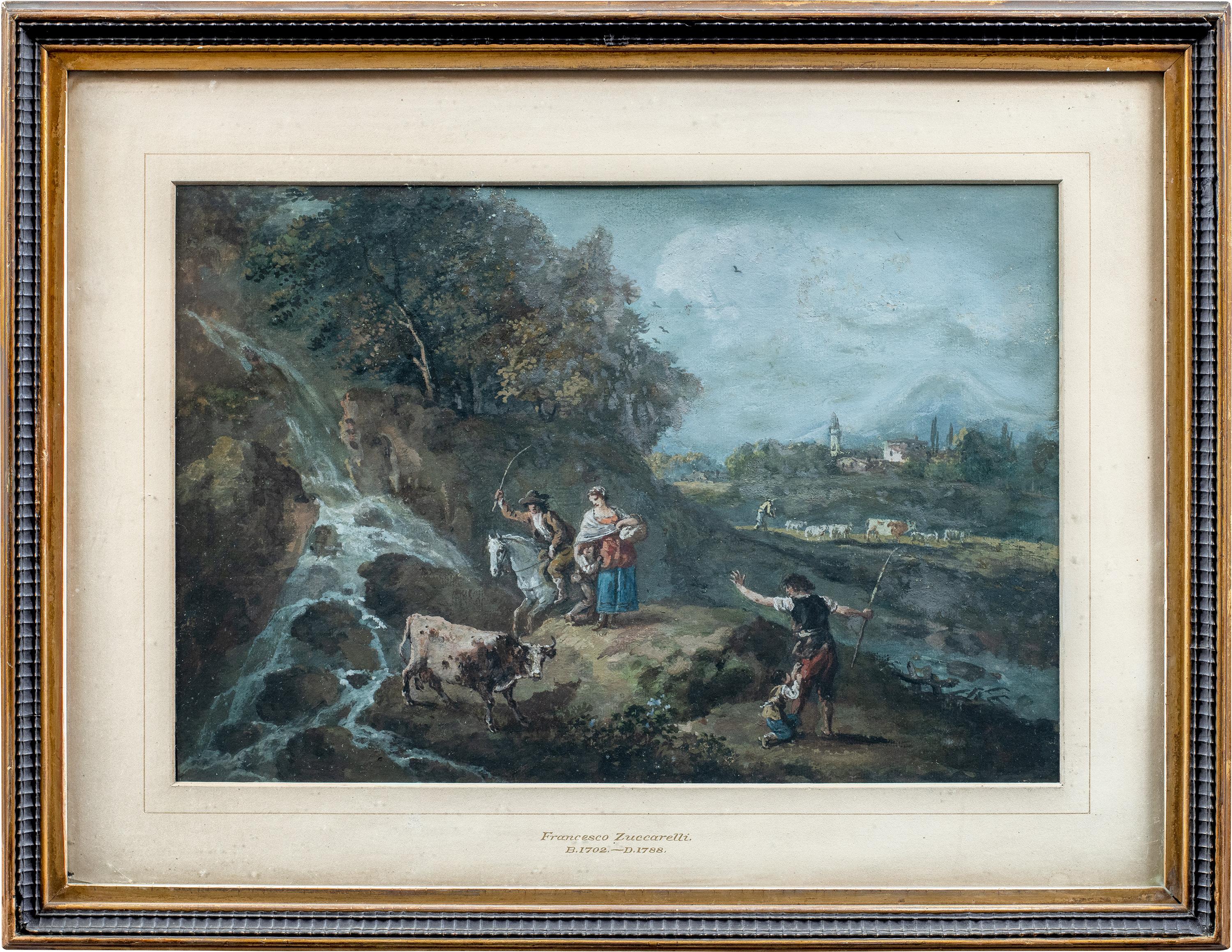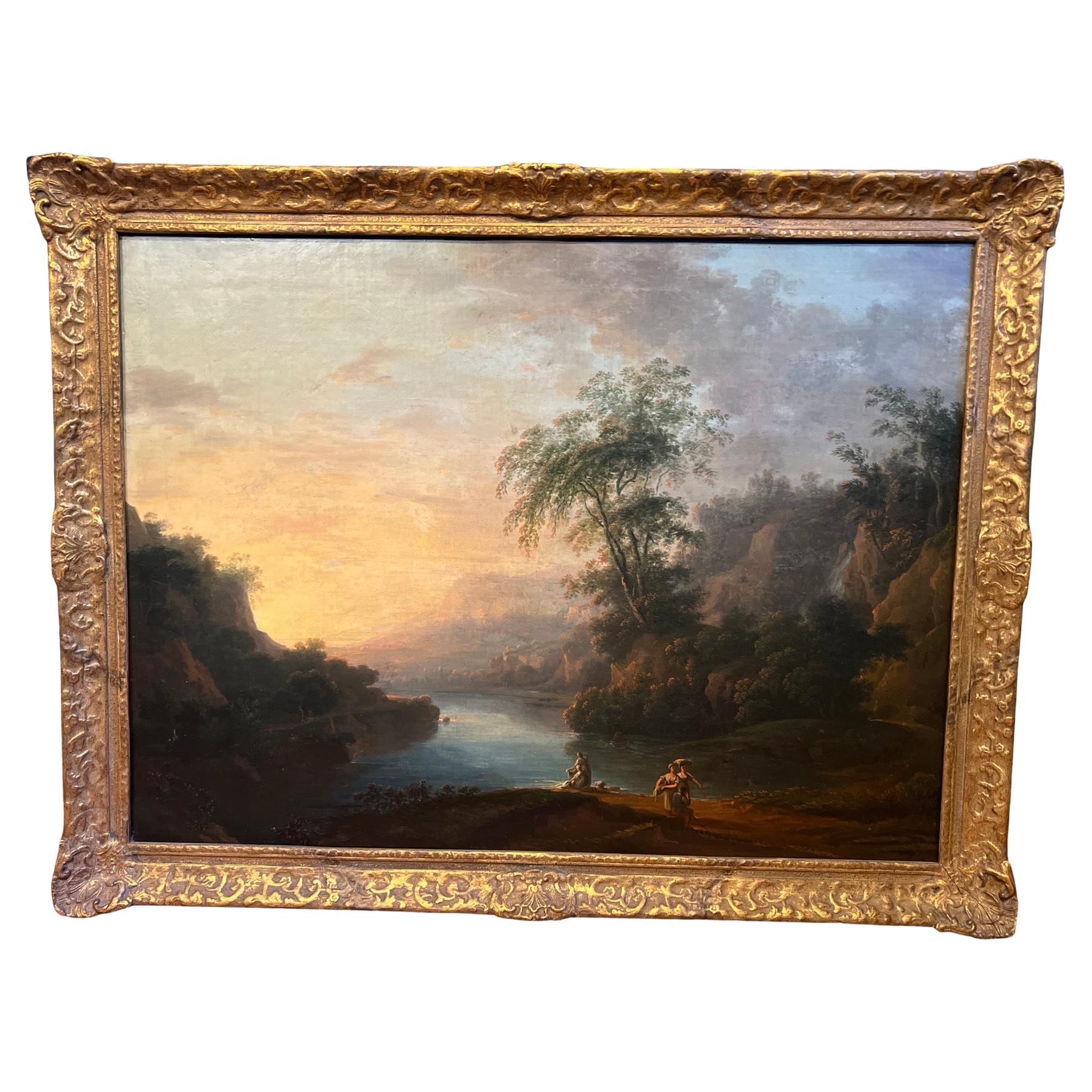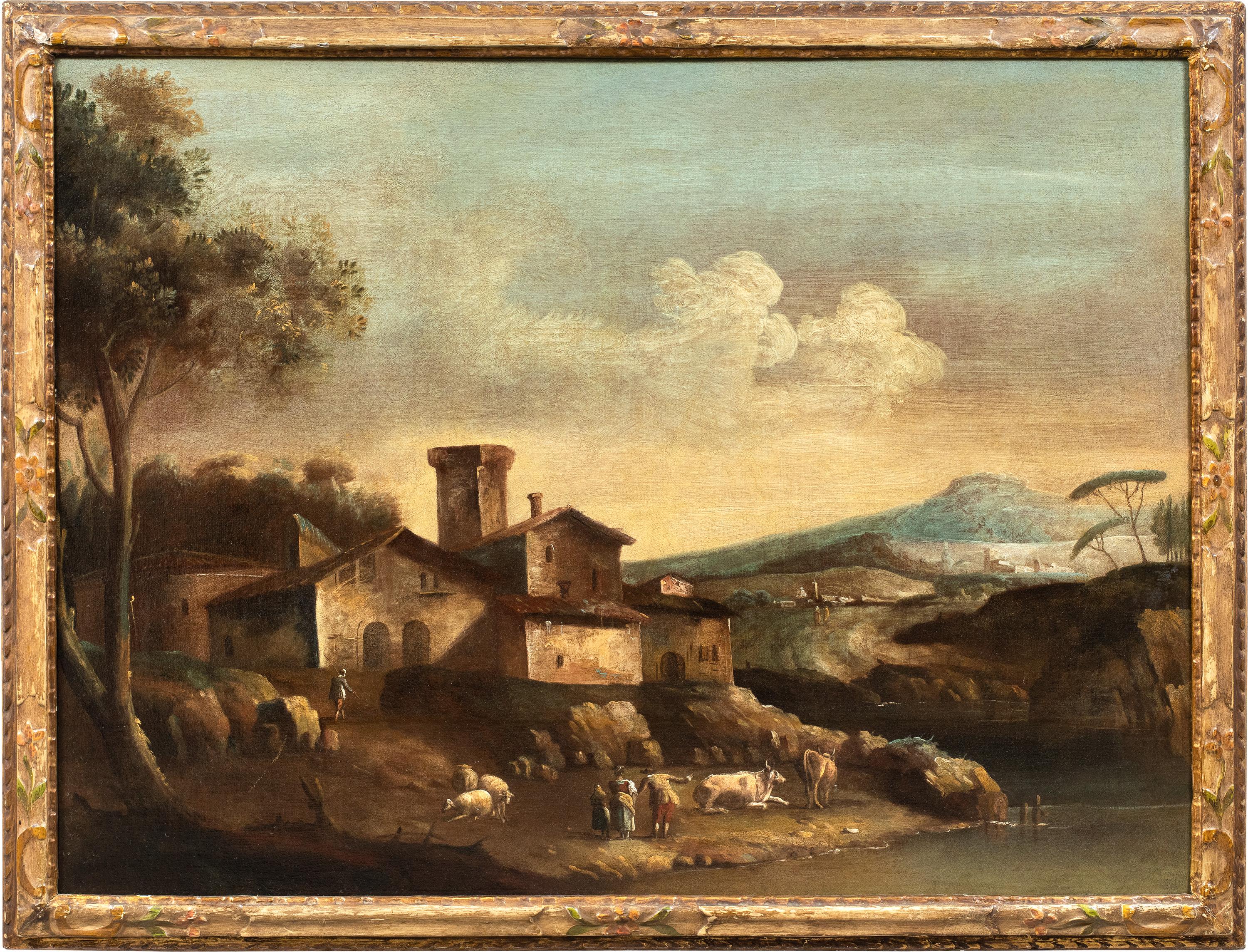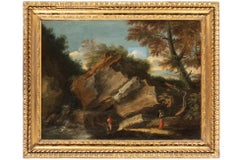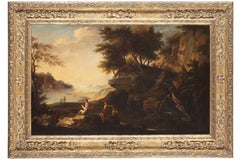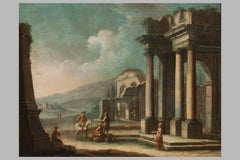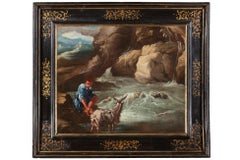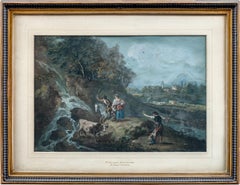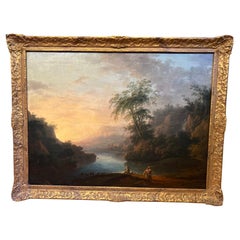Items Similar to 18th Century by Andrea Locatelli Landscape with fisherman Oil on canvas
Video Loading
Want more images or videos?
Request additional images or videos from the seller
1 of 15
Andrea Locatelli18th Century by Andrea Locatelli Landscape with fisherman Oil on canvas18th Century
18th Century
$7,452.11
$9,315.1320% Off
£5,510.60
£6,888.2520% Off
€6,240
€7,80020% Off
CA$10,236.19
CA$12,795.2420% Off
A$11,382.06
A$14,227.5720% Off
CHF 5,958.71
CHF 7,448.3920% Off
MX$139,033.96
MX$173,792.4520% Off
NOK 74,877.10
NOK 93,596.3720% Off
SEK 70,436.91
SEK 88,046.1420% Off
DKK 47,512.79
DKK 59,390.9920% Off
About the Item
Andrea Locatelli (Rome, Italy, 1695 – 1741)
Title: Landscape with fisherman
Medium: Oil on canvas
Dimensions: Without frame 27 x 28.5 cm – with frame 35 x 47.6 x 3.5 cm
Expertise by Fabio Obertelli, art historian
Fairs: The International Biennial of Antiques in Florence 2024 (BIAF, Biennale Internazionale dell’Antiquariato di Firenze)
Andrea Locatelli was an Italian painter of landscapes and was born in Rome. Even though among the academic artists the most popular subject matter was sacred, historical or mythological themes, he broke with these traditions and instead concentrated on painting landscapes. At the time landscape painting was a genre which was considered to be inferior by the art critics. Nevertheless, his work was in great demand and he was patronised by kings, queens, cardinals and princes not only in Rome but throughout Europe. In his early career the countryside he depicted was mostly characterised by the presence of architectural elements including columns or buildings. On the contrary, in later years elements such as trees, peasants, and farm animals were much more prominent. It’s the case of “Landscape with fisherman”, where the robust tree on the left is the main focus of the painting while the rest of the landscape looks much quieter. In most of his landscape paintings, Locatelli uses vertical elements, such as buildings, columns or large trees rising up from the foreground, to balance the entire painting.
- Creator:Andrea Locatelli (1695 - 1741)
- Creation Year:18th Century
- Dimensions:Height: 13.78 in (35 cm)Width: 18.75 in (47.6 cm)Depth: 1.38 in (3.5 cm)
- More Editions & Sizes:Dimensions: Without frame 27 x 28.5 cm – with frame 35 x 47.6 x 3.5 cmPrice: $9,315
- Medium:
- Movement & Style:
- Period:
- Condition:
- Gallery Location:Milano, IT
- Reference Number:1stDibs: LU1701215465102
About the Seller
5.0
Gold Seller
Premium sellers maintaining a 4.3+ rating and 24-hour response times
Established in 1964
1stDibs seller since 2021
Typical response time: 1 hour
- ShippingRetrieving quote...Shipping from: Milano, Italy
- Return Policy
Authenticity Guarantee
In the unlikely event there’s an issue with an item’s authenticity, contact us within 1 year for a full refund. DetailsMoney-Back Guarantee
If your item is not as described, is damaged in transit, or does not arrive, contact us within 7 days for a full refund. Details24-Hour Cancellation
You have a 24-hour grace period in which to reconsider your purchase, with no questions asked.Vetted Professional Sellers
Our world-class sellers must adhere to strict standards for service and quality, maintaining the integrity of our listings.Price-Match Guarantee
If you find that a seller listed the same item for a lower price elsewhere, we’ll match it.Trusted Global Delivery
Our best-in-class carrier network provides specialized shipping options worldwide, including custom delivery.More From This Seller
View All17th Century by Pietro Montanini Landscape Oil on Canvas
Located in Milano, Lombardia
PIETRO MONTANINI (Perugia, Italy, 1619 - 1689)
Title: Landscape
Medium: Oil on canvas
Dimensions: without frame 50 x 65 cm - with frame 64 x 79 cm
An...
Category
17th Century Old Masters Landscape Paintings
Materials
Canvas, Oil, Cotton Canvas
$10,127 Sale Price
22% Off
17th Century by Jacob de Heusch Pair of Landscapes Oil on Canvas
Located in Milano, Lombardia
Jacob De Heusch (Utrecht, Netherlands, 1657 – Amsterdam, Netherlands, 1701)
Title: Pair of Landscapes
Medium: Oil on canvas
Dimensions: without frame 50 x 8...
Category
17th Century Old Masters Landscape Paintings
Materials
Oil, Canvas
18th Century By Giovanni Domenico Gambone Pair of Capricci Oil on Canvas
Located in Milano, Lombardia
Giovanni Domenico Gambone (1720 - 1793)
Title: Pair of Capricci
Medium: Oil on canvas
Dimensions: without frame 85 x 112 cm - with frame 97 x 124 cm
The price is intended for the c...
Category
Mid-18th Century Old Masters Landscape Paintings
Materials
Oil, Canvas
18th Century by Giuseppe Pianca Shepherd with Goat and River Oil on Canvas
Located in Milano, Lombardia
Giuseppe Antonio Pianca (Agnona di Borgosesia, Italy, 1703 - Milan, Italy, 1762)
Title: Shepherd with Goat and River
Medium: Oil on canvas
Dimensions: without frame 49 x 57 cm - wit...
Category
18th Century Old Masters Landscape Paintings
Materials
Cotton Canvas, Oil, Canvas
18th Century by Francesco Zuccarelli Landscape with River and Waterfall
Located in Milano, Lombardia
Francesco Zuccarelli (Pitigliano, Italy, 1702 - Florence, Italy, 1788)
Title: Landscape with River and Waterfall
Medium: Oil on canvas
Dimensions: without frame 55 x 78.5 cm - with frame 70 x 93 cm
Expertise by Professor Giancarlo Sestieri
Publications: Giorgio Baratti Collezione. Selezione di opere d’arte antica (Giorgio Baratti Collection. Selection of ancient works of art), curated by Professor Giancarlo Sestieri with the participation of Professor Andrea Emiliani, Grafiche Veneziane, Venezia 2011, pp...
Category
18th Century Old Masters Landscape Paintings
Materials
Canvas, Oil
17th Century by Pieter Mulier Landscape Oil on Canvas
By Pieter Mulier known as the Cavalier Tempesta (Haarlem 1637 - Milan 1701)
Located in Milano, Lombardia
Pieter Mulier known as Tempesta (Haarlem, Netherland, 1637 - Milan, Italy, 1701)
Title: Landscape
Medium: Oil on canvas
Dimensions: without frame 49 x 65...
Category
17th Century Old Masters Landscape Paintings
Materials
Canvas, Oil, Cotton Canvas
You May Also Like
Landscape Zuccarelli Paint Oil on canvas Old master 18th Century Italian View
By Francesco Zuccarelli (Pitigliano 1702 - Florence 1788)
Located in Riva del Garda, IT
Francesco Zuccarelli (Pitigliano 1702 - Florence 1788), circle of
Landscape with river and resting shepherds
First half of the 18th century
oil painting on canvas
cm. 60 x 93, within a carved and gilded wooden frame cm. 75 x 108
This delightful landscape view animated by a family of shepherds who rest from their daily duties should be compared to the hand of Francesco Zuccarelli (Pitigliano 1702 - Florence 1788);
In the landscapes painted by Zuccarelli the world is crystallized, frozen in a moment of idyllic quiet,
where the 'Arcadian' sense of the landscape is rendered with that pictorial vivacity, chromatic lightness and compositional grace that we find in its entirety in his painting.
By way of comparison we can compare our canvas to other compositions, including:
- Landscape with river and resting shepherds, Accademia Carrara, Bergamo
- Landscape with bridge and horseman, Accademia Carrara, Bergamo
- Landscape with river, village, fisherman and shepherdesses' (Christie's, London May 1960,
- Landscape with figures, Accademia Carrara,
- Landscape with knight and figures, Accademia Carrara
Tuscan by origin, Francesco Zuccarelli trained first in Florence with the landscape architect Paolo Anesi...
Category
18th Century Old Masters Paintings
Materials
Oil
$6,474 Sale Price
40% Off
Francesco Zuccarelli (Venetian master) - 18th century landscape painting
By Francesco Zuccarelli
Located in Varmo, IT
Francesco Zuccarelli (Pitigliano 1702 - Florence 1788) - River landscape with shepherds and herds.
31 x 46 cm without frame, 47.5 x 57 cm with frame.
Tempera on paper, in a gilded ...
Category
Mid-18th Century Rococo Landscape Paintings
Materials
Tempera, Paper
Huge 18th Century Classical Italianate Arcadian Landscape Figures & Buildings
Located in Cirencester, Gloucestershire
Figures in an Arcadian Landscape
Italian School, 18th century
follower of Claude Lorrain (French 1600-1682)
oil painting on canvas: 28 x 36 inches
framed: 39.5 by 47 inches
presented...
Category
18th Century Old Masters Landscape Paintings
Materials
Canvas, Oil
18th Century, Old Master European Landscape Painting Italian School
Located in Atlanta, GA
Italian School, 18th century.
A masterful example of 18th-century Italian School artistry, this Old Master landscape painting captures the sublime beauty of an idealized European co...
Category
Antique 18th Century Italian Baroque Paintings
Materials
Canvas, Giltwood, Paint
$6,000 Sale Price
20% Off
Francesco Tironi (Venetian master) - 18th century landscape painting - Shepherds
Located in Varmo, IT
Francesco Tironi (Venice 1745 - Venice 1797) - Venetian landscape with shepherds and herds.
95 x 130 cm without frame, 107 x 140 cm with frame.
Antique oil painting on canvas, in a...
Category
Late 18th Century Rococo Landscape Paintings
Materials
Canvas, Oil
Baroque Italian painter - 17th century landscape painting - Fishermen
Located in Varmo, IT
Italian painter (17th-18th century) - River landscape with fishermen.
93.5 x 127.5 cm without frame, 102 x 137 cm with frame.
Oil on canvas, in a gilded wooden frame (not signed).
...
Category
Late 17th Century Rococo Landscape Paintings
Materials
Canvas, Oil
More Ways To Browse
18th Century Canvas
European Painting 18th Century
Antique Fisherman
Italian Painting Peasants
Vertical Oil Paintings Trees
Large Vertical Landscape Oil Paintings
18th Century European Landscapes Oil Paintings
Oil Painting Old Fisherman
Andrea Locatelli
Paul Stanley
Deer Oil Painting
Photorealism Landscape
Duck Paintings
French Caribbean Art
Matisse Tree
Notre Dame Cathedral
Oil Paintings Texas Hill Country
Scottish Highlands Oil Painting
